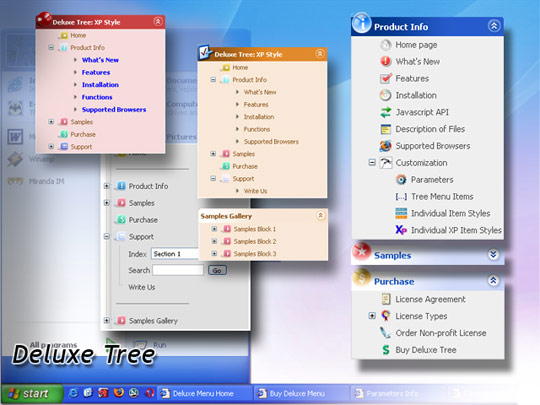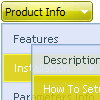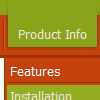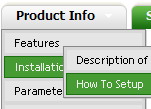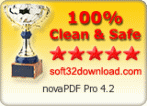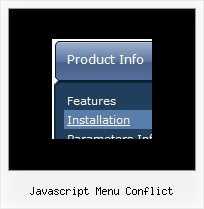Recent Questions
Q: Is it possible to make on top of the css tree menu 2 extra buttons:
* Expand all
* Collapse all
Which command do I use???
A: Tree Menu doesn't have such a feature now.
You can write your own function based on the following API functions:
function dtreet_ext_showItem (itemID, visibility)
function dtreet_ext_expandItem (itemID, expand)
Q: I purchased the right to use deluxe-menu because I liked how it worked versus my old menu which is your competitor (milonic menu) in the javascript driven menu market.
However, after using your menu for a few months, I have discovered a problem. When I bought the menu, the claim was made it worked with all doctypes. I use "strict" on my web site and want my pages to validate as strict with W3C or WDG validators.
I get a notice of incorrect copyright when I remove the link to yoursite in the heading of the document. Since this line does not validate,I feel that you should provide an adequate alternative to having a unsubstantiated line in your html code. I have looked over the FAQ on your site and have found no remedy. You have a wonderful product and I wish to continue to use your menu. But this one little bugaboo surely can be fixed on your end by altering the requirement to keep the incorrect copyright from appearing even though it shouldn't appear in my opinion.
For instance, I can alter the line and make the link invisible.
Example: <noscript><a href="http://deluxe-menu.com"></a></noscript>
By making the link invisible with no text, it will mean nobody would see the blatant ad for your site. The incorrect copyright notice does not appear under those circumstances, however it still does not validate.
I just want to create web pages that validate! Please help me as a struggling web author to achieve my goal and still use your menu which I paid for! Thanks for any help you can give me.
I love my deluxe-menu! Please help to keep using it.
A: Thanks for your interest in our products.
Try to move <noscript> tag into the <body> tag.
Q: Do you have an extremely simple example of modifying a menu with the JavaScript API? I've played with the example on the site, but I have trouble removing the other menus without breaking it.
I just want to use the API to change the icon on the menu items.
A: You should use the following function:
function dm_ext_changeItem (menuInd, submenuInd, itemInd, iParams)
<script language="javascript" >
dm_ext_changeItem(0, 0, 1, ["", "", "new_icon.gif", "new_icon_o.gif", "",,""]);
</script>
Q: Do you have documentation for the paramaters for the apycom DHTML menu.
I'm try to figure out how to get a javascript menu link to open in the same window instead of a new window..
["|Legal","http://www.yahoo.com/","","","",,,],
A: You can find more info about menu parameters here:
http://www.dhtml-menu.com/menu/dhtml-sliding-menu-items-info.html
You should write:
["|Legal","http://www.yahoo.com/","","","","_self",,],

